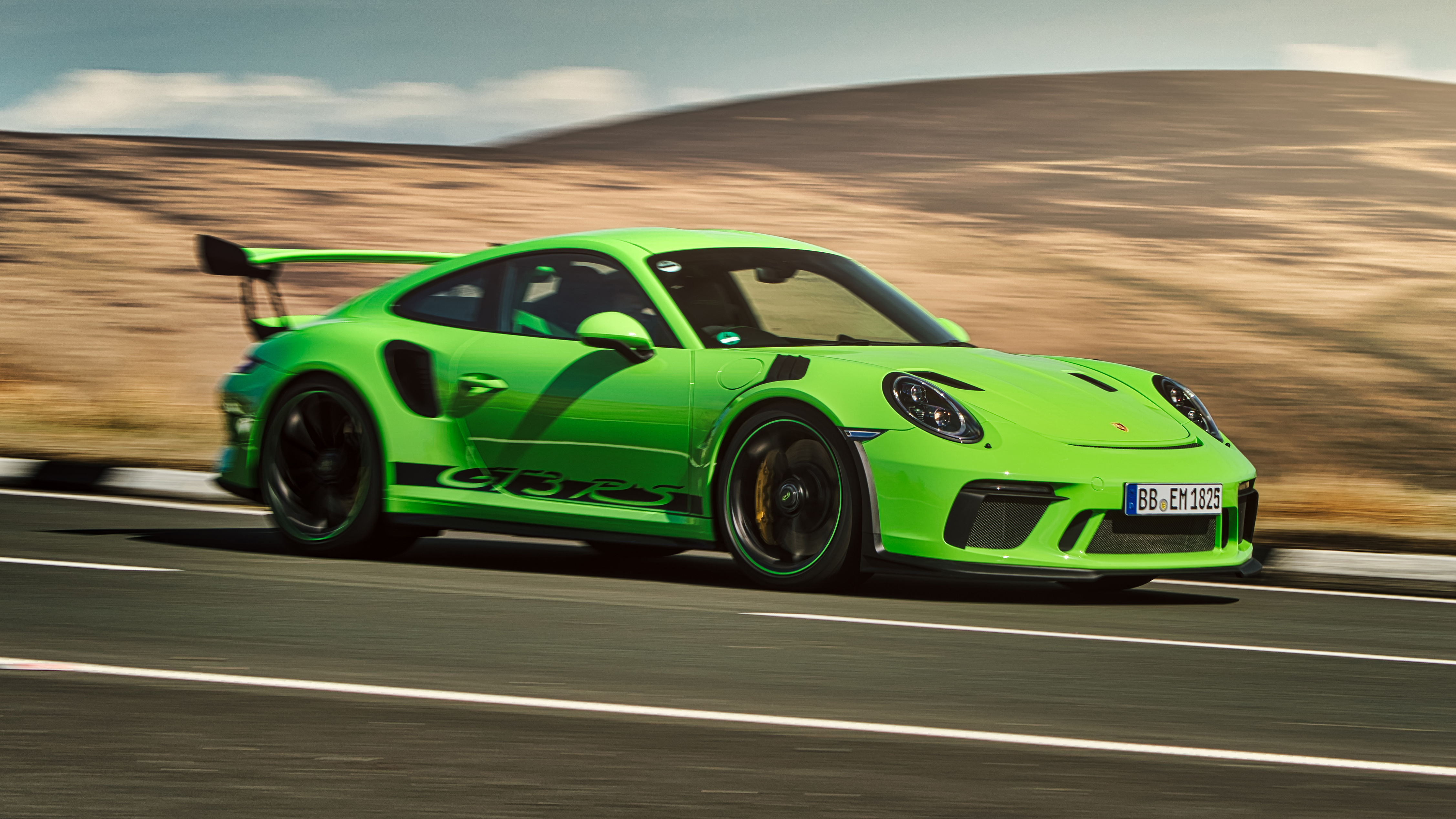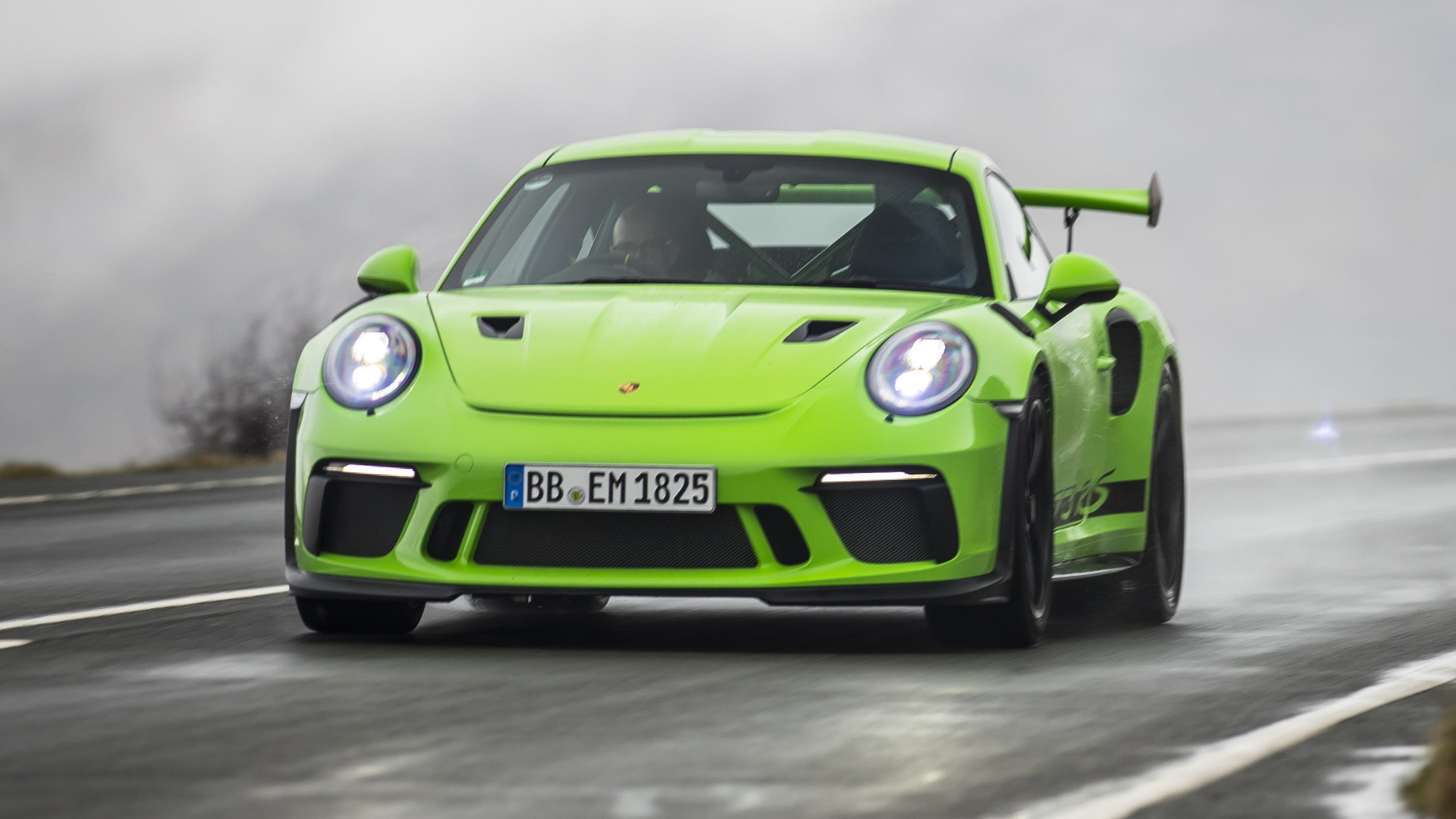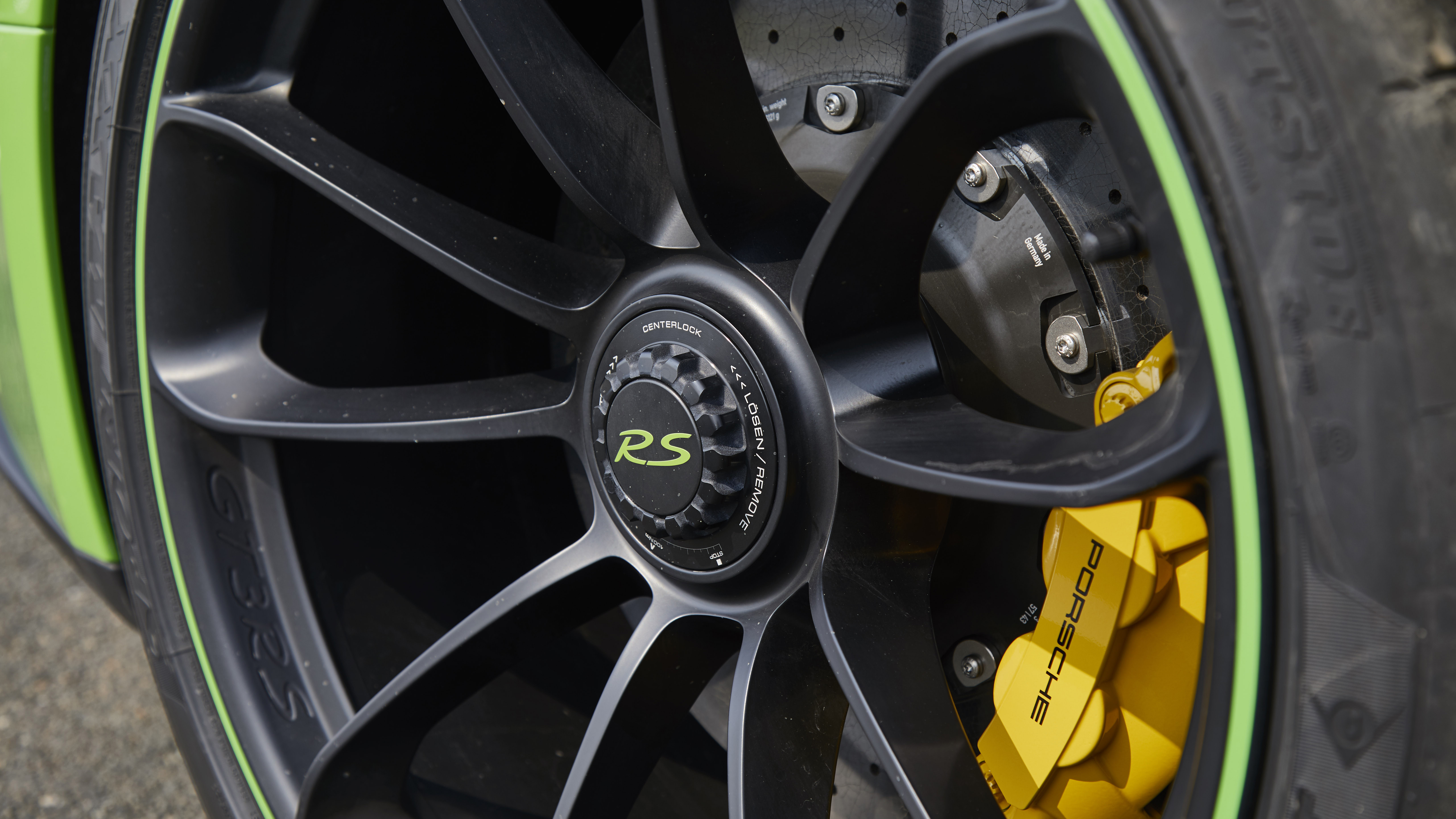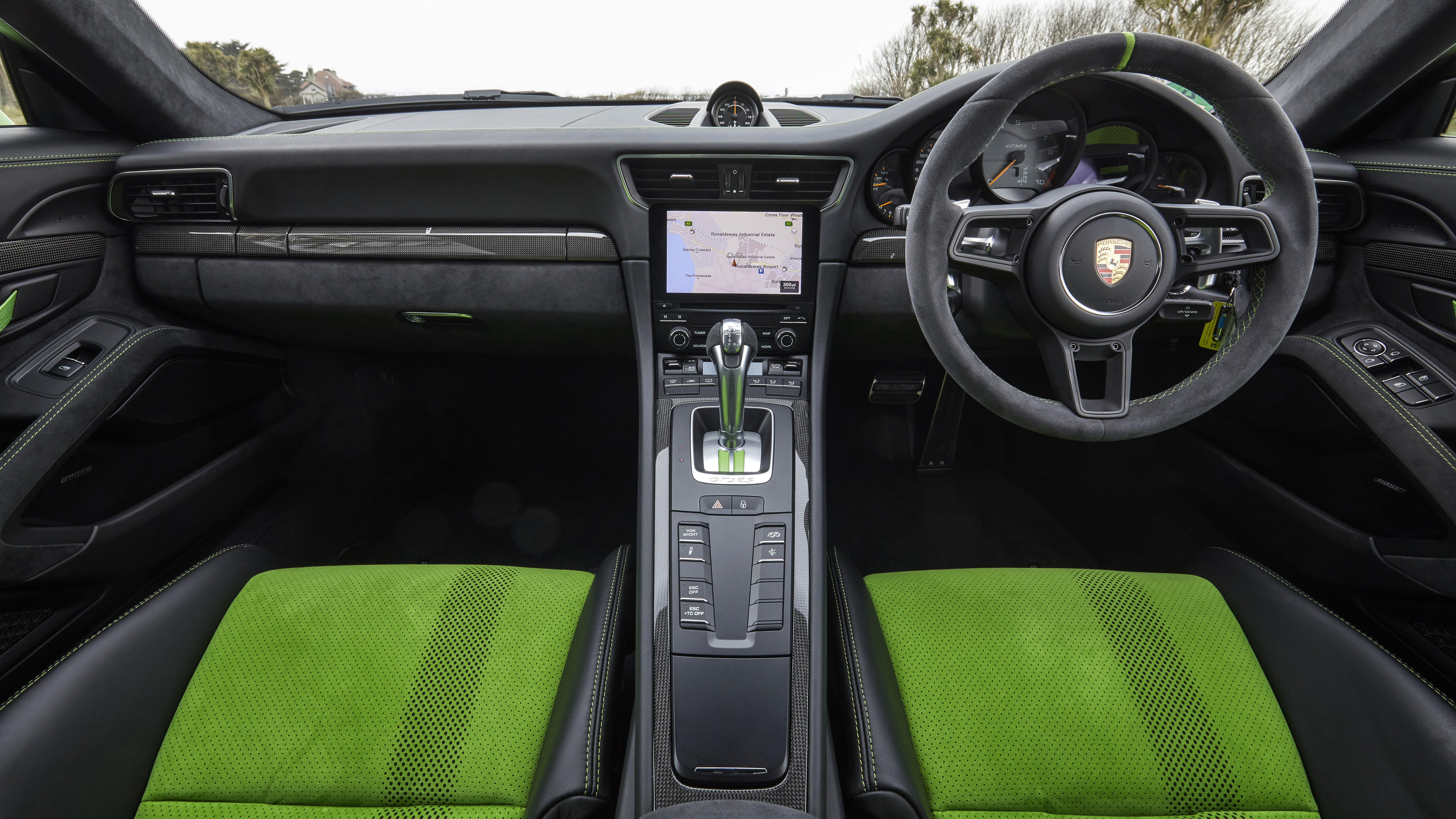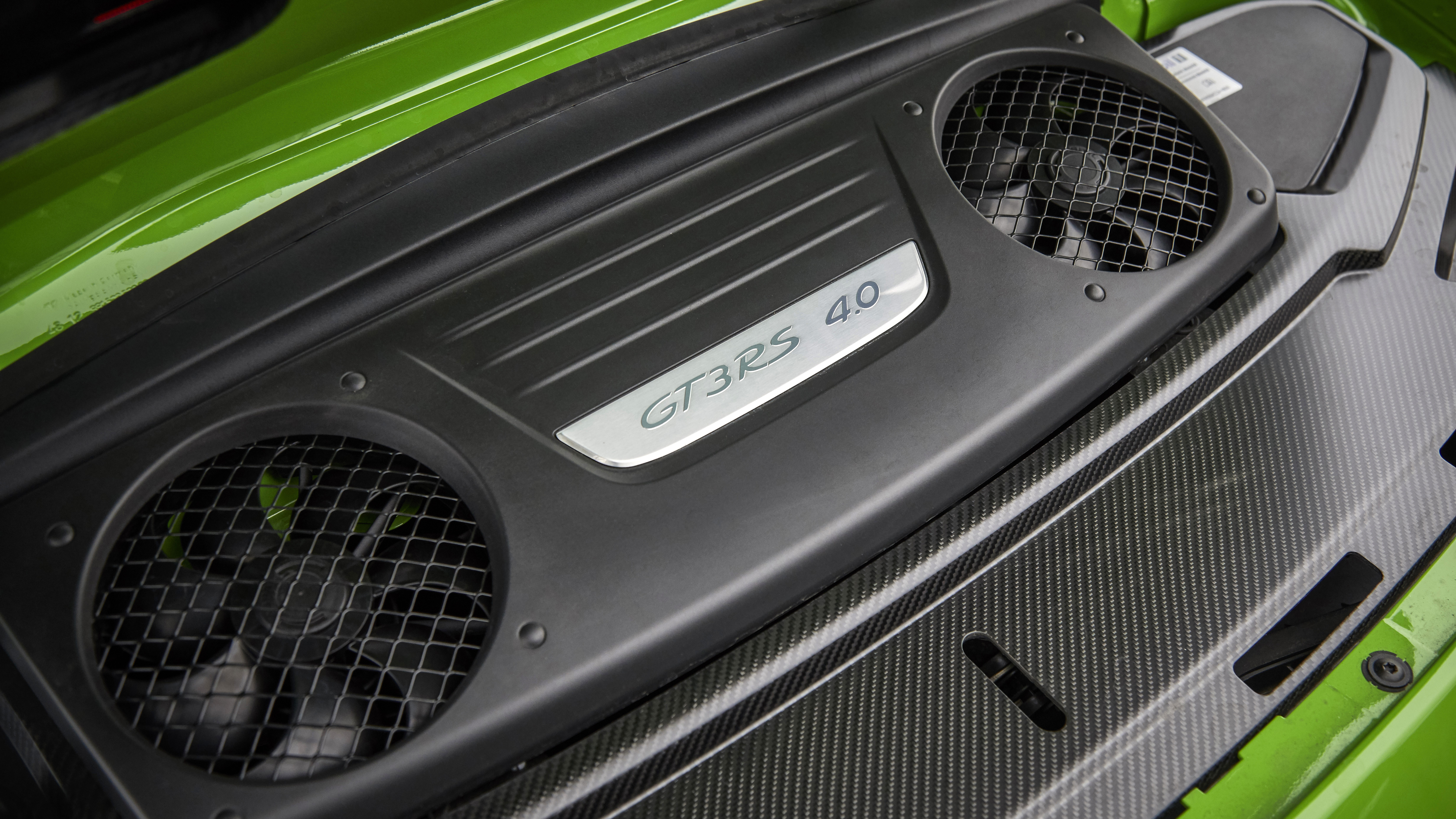
Porsche 911 GT3 RS review: 513bhp road-racer tested
Ah, the latest Porsche 911 GT3 RS, the car that did 6m 56.4secs around the ‘Ring.
Isn’t that nuts? 6m 56.4secs, less than ten seconds slower than the GT2 RS which has an extra 170bhp. Shows you how little power counts for these days.
What makes the GT3 RS so fast then?
If you listen to Porsche, aero. It’s up 40 per cent over the previous generation model. I know, I know, it barely looks any different and the temptation with the latest GT3 RS is to believe that Porsche is just fiddling about with the chassis, tweaking the ECU to liberate a bit more power and then painting it a new signature colour (Lizard Green, people) and rolling it out to the gullible.
And, on the surface, that’s pretty much what’s gone on. You have to be a detail fiend to appreciate the RS. Because that’s the sort of car it is. A car that works the fractions, focuses in on the minutiae.
Come on then, what’s new about the facelifted 991 GT3 RS?
Right, I’ll attempt to keep this brief. Engine first. According to Andreas Preuninger, head of Porsche’s GT cars division, this is little short of a second generation version of the new 4.0-litre flat six. Power may only have climbed 20bhp, and torque by 7lb ft, but behind the figures there’s a new oil sump, wider conrods, improved oil supply, a larger crankshaft and revised valvetrain.
The target was 9,000rpm to prevent the awkward situation where the Gen1 991 GT3 hit the magic number, but the RS managed only 8,800rpm. Safe to assume there were other targets too – improved drivability being one, seeing as low end torque delivery feels healthier now, the kick at 4,500rpm less pronounced.
What about the chassis and suspension?
The basic layout (McPherson strut and double wishbone front and multi-link rear) hasn’t changed, but the thinking behind it has. Massively. Which rather contradicts what I said earlier about detail. Anyway, instead of setting the car up using conventional road car wisdom - where you fit soft (ish) springs and a stiff anti-roll bar so you get a more accommodating ride in a straight line, then strong roll control in the corners - Porsche has instead followed the Cup racing car’s strategy.
Top Gear
Newsletter
Thank you for subscribing to our newsletter. Look out for your regular round-up of news, reviews and offers in your inbox.
Get all the latest news, reviews and exclusives, direct to your inbox.
The downside of the anti-roll bar (or sway bar) is that it can transfer unwanted forces back across the axle. So Porsche has increased the spring rates by 50 per cent front and rear, and the anti-roll bars have been slackened off, giving each wheel more independent control. It’s like Porsche has realised that since this is its most track-focused road car, it really ought to set it up like a race car.
This brings us back to aero again, right?
Adjust the rear wing to its steepest angle (it’s a manual operation, but come on, you care about the little things), and with the car in Sport mode, inserts in the front diffuser change position and the result is twice as much downforce as the regular GT3 at 125mph (144kg plays 69). “At maximum speed we’re now closing in on 500 kilos in that thing”, says Preuninger. The previous gen car developed 330kg.
Tell me something else cool.
You can option both a Clubsport package (rollcage, harness, fire extinguisher, ignition cut-off) and a Weissach package (as available on the 918 Spyder and GT2 RS). This drops weight by something like 28kg, the biggest savings of which are made by magnesium wheels (11.5kg lighter), and a switch from steel to titanium for the rollcage (9.5kg). On top of that, the anti-roll bars are constructed from carbon fibre, the already lightened rear carpets are made even lighter, and there are carbon paddles and a carbon steering wheel cover. It’s all quite involved. But then so’s the rest of the car.
It still weighs 1,430kg though, so it’s not that light.
No, and on paper the weight has gone up by 10kg, too. Here’s Preuninger again. “If you compare apples to apples the new car is about 10kg lighter, but we can’t show that on paper because the certification process has changed. You used to be able to take the lightest spec the customer can choose and quote that as the car’s weight, which is fair, but now we have to have some more equipment in the car.”
That looks like the Isle of Man.
Correct. Just the place for a car that you could view as the ultimate tarmac rally car as much as a track lapper.
And how was it?
Completely different to its predecessor. That’s the first thing that struck me – how different it felt just driving along a road at ordinary speeds. Now, it’s still a 911 GT3 RS, so the weight balance is broadly the same, the flat six doesn’t sound like a V8 all of a sudden and its ethos hasn’t shifted. But the suspension changes have made a huge difference to its road manners.
I wouldn’t call it harsher exactly, but there’s noticeably less movement and travel in the front suspension – that’s the end you notice more. But the precision…
I remember driving the first gen 991 GT3 RS and thinking Porsche had cured the hopping and bouncing of older 911s. To an extent they had – the 991 generation 911 has a longer wheelbase, with the rear wheels pushed further back. That means the weight of the engine out back has less leverage on the front wheels, and I distinctly remember driving the GT3 RS and thinking the bobbly front end had gone completely. Turns out it hadn’t.
I drove both cars (and both 996 and 997 generations too, which you can read more about on TopGear.com soon) back-to-back on the TT course (lucky sod…) and on the same difficult stretch, the new car felt so much more accurate and precise.
It’s all about the front end. The connection between steering and wheels is unimpeachable. You input, it gives you exactly what you asked for and tells you all about it. You can’t ask for much more from a modern steering system. There’s no skip, hop or fidget to upset the process, it just turns in like Tron and gives you the most delicious sensations while doing so.
Is there enough front end grip? What about understeer?
Not at road speeds, not even on the derestricted Isle of Man. But when you do build up some speed you notice the aero working. It’s subtle, but the nose stabilises, the weight balance and centre of gravity seeming to transfer forward to help nullify the effect of the engine out back.
As a result, despite the differences in the tyre widths (265/35 ZR20 at the front while the rears are 325/30 ZR21), the car feels very well balanced. You don’t have to manage the understeer in the same way as before, instead both ends work in closer harmony and the RS carves through corners in a way that makes its balance feel more like that of a mid-engined car. It’s uncanny.
How is the engine?
Magnificent. Despite all the extensive changes it’s harder to spot the differences here, but they are there: pick-up from low revs seems more immediate and there’s a fatter hit of torque through the mid-range which nullifies the Variocam’s step change at 4,500rpm.
It is deeply, deeply fast and massively, massively exciting to use. Perhaps the very finest road car engine available today if you value immediacy, purity and throttle control.
But even on the IOM places to fully indulge the flat six are limited. But that’s almost the point. Experiencing 7-9,000rpm in the GT3 RS isn’t something you should be able to do at the drop of a hat, it’s something you should work towards and then savour. Not least because this engine has so much richness and character to it.
And how does engine blend with chassis?
In an almost celestial way. Everything feels sharper, and yet so immaculately precise to use. This makes the process of squeezing more power on while unwinding the steering, for instance, so symbiotic that some extra-sensory spark sends tingles around your body.
But is the ride too harsh now?
Hard to say. Mainly because I got very carried away with the act of just driving. But no, it’s not quiet and not cushioned. You’re sunk low in a cockpit that requires you to sit upright and pay attention. You don’t even get distracted by the excessive green. That’s how much the driving snares you.
But it’s not uncomfortable, partially because you’re not concentrating on that, but mainly because the quality of the damping packed into such an abbreviated amount of suspension travel is uncanny, and the control so rigid that there’s no chance of the car getting thrown off line. You move as one with it.
What’s the stand out element?
That front end. Forget the outright grip levels – as you can tell from the lap time, they’re just bananas, it’s the confidence that accuracy and precision gives you at all speeds that most beguiled me. But that’s the GT3 RS all over. It’s constrained within the boundaries of being a 911, but by the application of pure engineering at a microscopic level, almost manages to break out of them.
Verdict: 10/10
Specs: 3996cc Flat 6, 513bhp @ 8250rpm, 346lb ft @ 6000rpm, 0-62mph in 3.2sec, 194mph max, 22.1mpg, 291g/km CO2, 1430kg
Featured

Trending this week
- Car Review
BMW iX3




